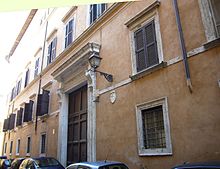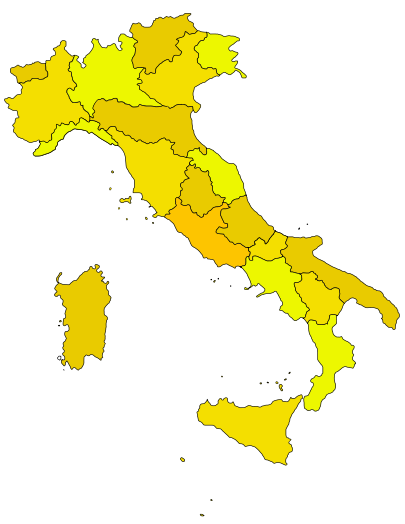Italian military justice

The Italian military justice is part of the Italian armed forces .
Responsibility and Organization
The military courts of Italy exercise criminal jurisdiction over soldiers of the armed forces, including the police forces with combatant status . The legal basis is primarily the two military penal codes for times of peace and war from 1941, which have been amended several times over the years. In addition to determining the requirements and legal consequences of criminal behavior, they also include the military code of criminal procedure .
Organizationally, the Italian military jurisdiction belongs directly to the business area of the Ministry of Defense in Rome . However, military judges and public prosecutors are independent in the exercise of their office and in this context are only subordinate to their self-governing body Consiglio della Magistratura Militare . In this respect, the military and the civil court system ( Consiglio Superiore della Magistratura ) are the same .
Since a reform in 2008 there are only three military courts of first instance in Verona , Rome and Naples ; the instance above is the military appellate court in Rome. The civil Supreme Court of Cassation in Rome can then check judgments for legal errors. All three instances have their respective military prosecutors or general prosecutors . There is also the military criminal enforcement court in Rome.
The regional jurisdiction of the military courts of first instance is as follows:
The duties of the military police are traditionally carried out by the Carabinieri . Of the former 13 military prisons , only the one in Santa Maria Capua Vetere near Naples, which is maintained by the army, remains today. In the military prison of Santa Maria Capua Vetere, convicted plainclothes police officers and officials from other administrations can also serve their prison sentence at their own request.
history
The history of Italian military justice has its origins in the military reforms of Duke Emanuel Philibert of Savoy . Since 1582 a general war auditor was in charge of the military justice system. Subordinate to the latter were divisional and regimental courts-martial. In 1859 this system was abolished when a military penal code was introduced. Instead, territorial military courts, courts-martial in large mobilized units and a final supreme court-martial were established. This organization of the Kingdom of Sardinia-Piedmont was taken over in 1861 in the course of the unification of Italy . Small changes and renaming were made in 1869 with the new military penal laws for the army and navy.
In peacetime there was a military tribunal in addition to the Supreme Military Court in Rome in each of the mostly twelve corps districts (territorial commands , military districts ), and the navy temporarily maintained its own naval court with its coastal section command . From 1981 to 2007 there were unified military courts of first instance in Turin , Verona , Padua , La Spezia , Rome , Naples , Bari , Palermo and Cagliari , as well as the military appellate court in Rome with branches in Verona and Naples and the military attorney general at the Supreme Court of Cassation . The self-governing body Consiglio della Magistratura Militare was established in 1988. With the reform introduced at the end of 2007, the military justice system was drastically reduced in size.
In the past, the fortresses of Peschiera del Garda and Gaeta and Forte Boccea in Rome were among the most important military prisons .
